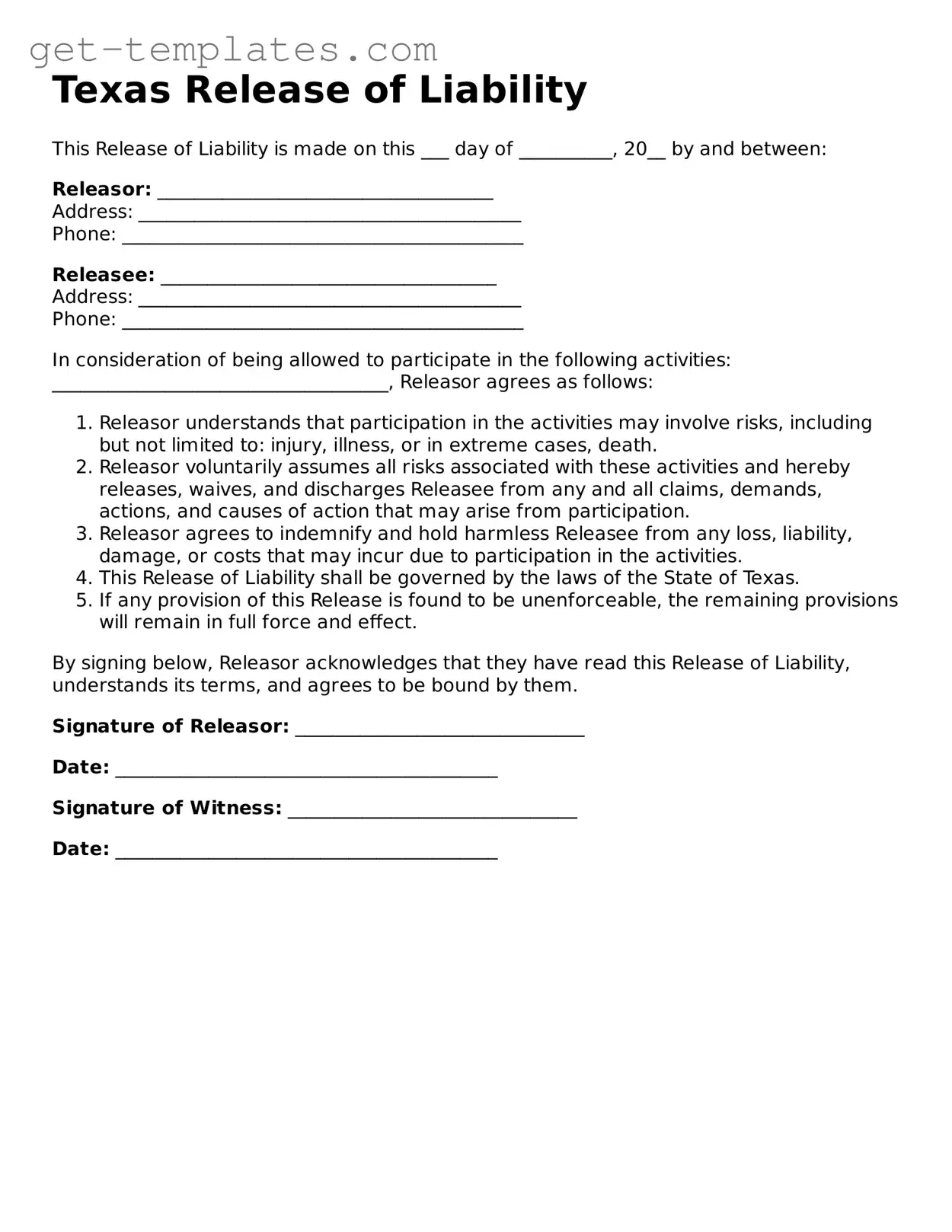Texas Release of Liability
This Release of Liability is made on this ___ day of __________, 20__ by and between:
Releasor: ____________________________________
Address: _________________________________________
Phone: ___________________________________________
Releasee: ____________________________________
Address: _________________________________________
Phone: ___________________________________________
In consideration of being allowed to participate in the following activities: ____________________________________, Releasor agrees as follows:
- Releasor understands that participation in the activities may involve risks, including but not limited to: injury, illness, or in extreme cases, death.
- Releasor voluntarily assumes all risks associated with these activities and hereby releases, waives, and discharges Releasee from any and all claims, demands, actions, and causes of action that may arise from participation.
- Releasor agrees to indemnify and hold harmless Releasee from any loss, liability, damage, or costs that may incur due to participation in the activities.
- This Release of Liability shall be governed by the laws of the State of Texas.
- If any provision of this Release is found to be unenforceable, the remaining provisions will remain in full force and effect.
By signing below, Releasor acknowledges that they have read this Release of Liability, understands its terms, and agrees to be bound by them.
Signature of Releasor: _______________________________
Date: _________________________________________
Signature of Witness: _______________________________
Date: _________________________________________
